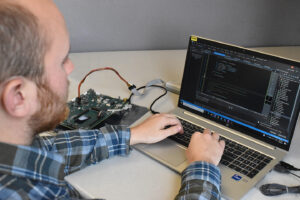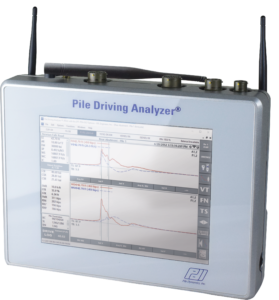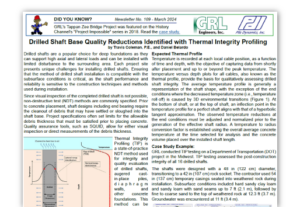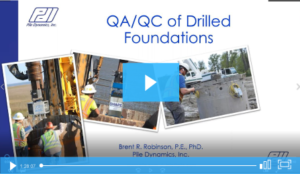When is it appropriate to use “Radiation Damping”, and when is it not?
When the radiation damping (RD) model was first developed, it was found that one could usually get a better match quality (MQ) by using it (see Likins et al, 1996). Using the limits suggested in that paper, over-predictions were kept to a minimum and overall correlations for all pile types in all soils improved – although individually radiation damping did not always help improve the correlation. However, since the RD model generally results in an increased capacity prediction, it was felt that using it in low blow count or high set per blow situations was probably not wise. Likins et al (1996) suggested a limit of 24 blows per foot (or 0.5 inch per blow which is 12.5 mm or more set per blow). Rausche et al (2008, p. 29 and forward) lowered this limit to a set per blow of 10 mm or more.
We recommend the use of RD for drilled piles (like drilled shafts, bored piles, and augered cast-in-place or CFA piles) since the rough surface of their shafts likely sets the soil in motion, unlike the clean shear surface that is common on smooth sided driven piles.
The higher the blow count (i.e., the smaller the set per blow), the more appropriate is the use of RD. RD is therefore appropriate for driven piles that are either driven to a small set per blow, or attain that small set during a restrike (due to set-up),
Rausche et al (2010) shows an example of use of radiation damping on an open end pipe pile and notes that internal soil plugs usually “slip”, at least partially, and the RD model may be appropriate to help model the soil movement. Likins et al (1996) mentions that in the case of “open profile” piles like open end pipes or H piles one should use RD with caution or not at all (with the reasoning being there could be different failure modes statically versus dynamically). Having said that, if the set per blow is very low, using RD may be appropriate, and would likely be helpful.
Likins, G. E., Rausche, F., Thendean, G., Svinkin, M., September, 1996. CAPWAP® Correlation Studies. Proceedings of the Fifth International Conference on the Application of Stress-wave Theory to Piles 1996: Orlando, FL; 447-464.
Rausche, F., Nagy, M., Likins, G. E., September, 2008. Mastering the Art of Pile Testing. Proceedings of the Eighth International Conference on the Application of Stress Wave Theory to Piles 2008: Lisbon, Portugal; 19-32.
Rausche, F., Likins, G. E., Liang, L., Hussein, M.H., January, 2010. Static and Dynamic Models for CAPWAP® Signal Matching. The Art of Foundation Engineering Practice, Geotechnical Special Publication No. 198, Hussein, M. H., J. B. Anderson, W. M. Camp Eds, American Society of Civil Engineers: Reston, VA; 534-553.
Return to FAQs



